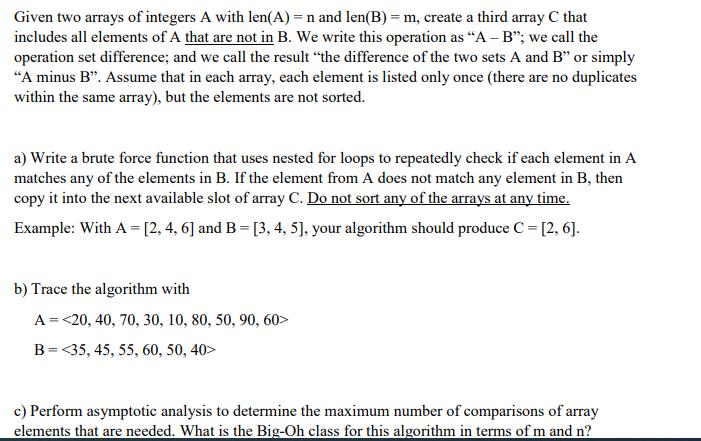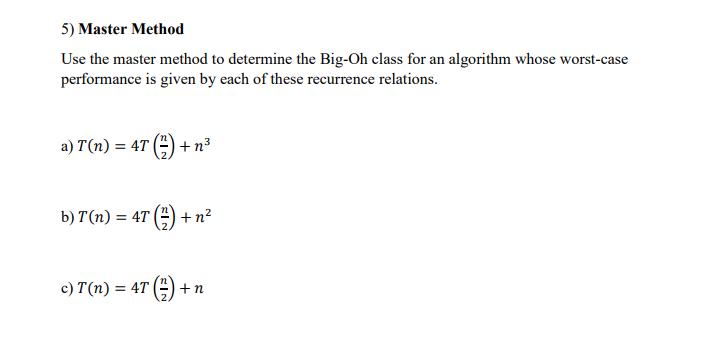Answered step by step
Verified Expert Solution
Question
1 Approved Answer
4) Brute Force Algorithm Create the Difference cI' Twe Sets Given two arrays of integers A with len[A] = n and Ien[E} = m, create



Given two arrays of integers A with len(A) = n and len(B) = m, create a third array C that includes all elements of A that are not in B. We write this operation as "A-B"; we call the operation set difference; and we call the result "the difference of the two sets A and B" or simply "A minus B". Assume that in each array, each element is listed only once (there are no duplicates within the same array), but the elements are not sorted. a) Write a brute force function that uses nested for loops to repeatedly check if each element in A matches any of the elements in B. If the element from A does not match any element in B, then copy it into the next available slot of array C. Do not sort any of the arrays at any time. Example: With A = [2, 4, 6] and B = [3, 4, 5], your algorithm should produce C = [2, 6]. b) Trace the algorithm with A B c) Perform asymptotic analysis to determine the maximum number of comparisons of array elements that are needed. What is the Big-Oh class for this algorithm in terms of m and n?
Step by Step Solution
There are 3 Steps involved in it
Step: 1

Get Instant Access to Expert-Tailored Solutions
See step-by-step solutions with expert insights and AI powered tools for academic success
Step: 2

Step: 3

Ace Your Homework with AI
Get the answers you need in no time with our AI-driven, step-by-step assistance
Get Started


